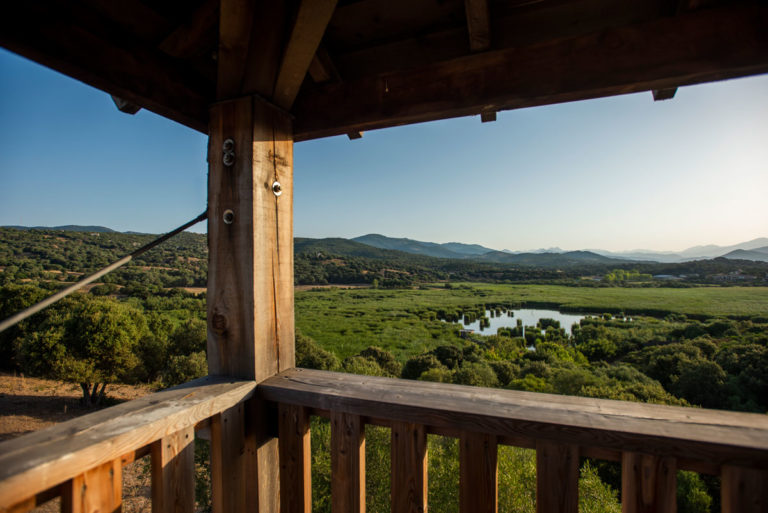Located in the commune of Serra-di-Ferro and owned by the Collectivité de Corse, the Etang de Tanchiccia is the region’s most emblematic wetland. In an exceptional setting, Tanchiccia is home to a wide variety of plants, animals and landscapes…
A threatened pond
The balance of the Tanchiccia pond is intimately linked to the natural functioning of the Taravo river. A major dam project has been planned on this river for thirty years. If it were to go ahead, it would certainly have an irreparable destructive effect on the Tanchiccia lake, as well as on the lives of the valley’s inhabitants and its agricultural and tourist activities.
A unique microcosm
The Etang de Tanchiccia is a rich and diverse natural environment. To enable you to discover the biodiversity of this exceptional site while preserving its tranquillity, special facilities have been created.
Footpaths, observatories, a panoramic tower and a rest area were all created in 2016.
How Tanchiccia works
Fed by the autumn and winter flooding of the Taravo, the Tanchiccia pond is at its fullest at the start of winter. It then gradually empties in the spring and is almost completely dry by the end of summer. This natural cycle of filling and emptying helps to purify the waters of the alluvial plain, while seasonal fluctuations contribute to the regular evolution of the landscapes and colours of the pond, as well as the associated plant and animal populations.
The Tanchiccia reed bed
Most of the Tanchiccia pond is covered by a matrix of reeds (phragmites) and cattails (typhas) known as the reed bed. The Tanchiccia reed bed covers around 18 hectares, or almost three-quarters of the surface area of the pond. It is the largest reed bed in southern Corsica! Punctuated by collections of water, pools and old drainage channels, it is a calm and attractive place for a wide variety of animal species, particularly birds.
History of Tanchiccia
Over geological time, the Taravo alluvial plain has evolved steadily. At the end of the Tertiary era, the Mediterranean covered the lower plain of the river. Gradually, the sea retreated, leaving a depression with a clay bottom.
Subsequently, the construction of a road in the 19th century (now the Porto-Pollo road) dammed up the pond. Particularly dependent on the river, the pond is filled according to the annual flooding of the Taravo.
Geology of the site
The substrate on which almost the entire Tanchiccia pond rests is composed of granite-like magmatic rocks known as granodiorites. In many places on the site, these form large blocks hollowed out by erosion, known as tafoni, from the Corsican word tafonu (pronounced tavonou) meaning “hole”.
A Corsican originality
As far back as prehistoric times, tafoni were used as living quarters, burial sites, cattle pens, etc. In the 19th century, some tafoni were enclosed by a wall with a door and used as sheepfolds or temporary dwellings: these structures were known as Orii (singular Oriu). Although none have been recorded at the Tanchiccia lake, many Orii are hidden in the Corsican scrubland.
4 golden rules for effective observation!
- Be as discreet as possible
- Do not leave the paths
- Don’t run
- Be patient








